Profile of Amago |
 |
| Amago Oncorhynchus masou ishikawae |
||
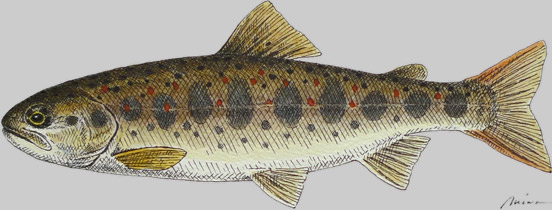 |
||
| Amago's features are they have streamlined body, a few parr marks on the side of a body and black dots of various sizes on a back and the side of a body.
Amago have vermilion dots. Yamame have not vermilion dots but there are some cases that they have pale vermilion belts on the side of a body.
Their parr marks, spots, dots and color are variety,
and a few black spots around eyes are characteristic. I think they makes expression of Amago more cute but almost all people don't notice that feature. |
Amago and Yamame belong to Sakuramasu group of Salmo Oncorhynchus.
A theory is that Amago and Yamame are the same species is accepted as a general situation now.
Amago, Yamame and Biwamasu are subspecies each. Biwamasu have not parr marks, black spots and vermilion dots. They resembles Amago or Yamame. There are some cases that they have dark color belts on the body side. They are called Iwame. The prevailing theory is that they are mutation of Amago, Yamame. |
|
Yamame Oncorhynchus masou masou Iwame Oncorhynchus masou 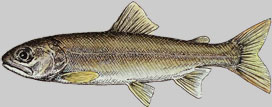 |
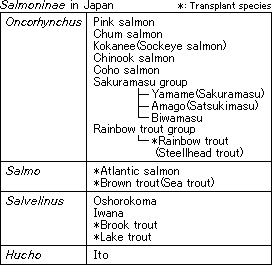 |
|
| The habitat of Amago is in the Pacific Ocean side of south of Sakawa River in Kanagawa Prefecture, all over Shikoku,
north of Ono River in Oita Prefecture and in the rivers around the Inland Sea of Seto. Yamame inhabits all over Hokkaido, the Pacific Ocean side of north of Sakawa River, all over the Japan Sea, the East China Sea of north of Kumamoto Prefecture and south of Bansho River in Oita Prefecture. Besides Japan, their home is East of Korean Peninsula, the Far Eastern Russia and the Sea of Okhotsk. But the habitats of Amago and Yamame are not clearly separated now because of artificial planting. Main habitat are upper streams because they like cold water. They like light and open streams as shallows when the temperature of the water is the most suitable for them, and they stay near the surface in the pool. They are weak in height temperature of the water, and become active between 0ºC (32ºF) and 20ºC (68ºF). The best is between 8ºC (46ºF) and 18ºC (64ºF). |
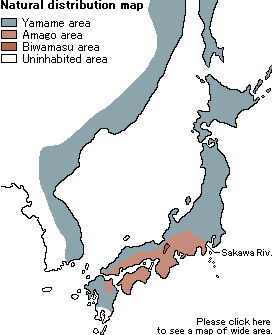 |
| Their active time is during the daytime. But they don't actively catch bait at the daytime of fine weather because they are very cautious. Their action is easily influenced by environment. They hide themselves behind rock etc. in the dry season. | The spawning season of Amago and Satsuki masu is from early Oct. to late Nov. It is the prime when water temperature is about 10ºC (21ºF).
Yamame and Satsukimasu are from Sept. to Nov. The spawning season become early as the north, and it is the same a time of autumn colors.
They spawn in the redd that was dug by a female in shallows of gravel. Amago spawn a few hundreds eggs. Satsukimasu spawn 1000 or 2000 eggs.
Diameter of Amago's egg is 4mm (0.16in.) or 6mm (0.24in.). It is hached in 30 days or 50 days on the condition that water temperature is from 9ºC (48ºF) to 16ºC (61ºF).
Yamame's egg is 4mm (0.16in.) or 5mm (0.2in.). It is hached in 40 days or 90 days on the condition that water temperature is from 6ºC (43ºF) to 15ºC (59ºF).
Fry of Amago stay for 30 days or more in the redd till they finish to absorb the yolk. Yamame stay for 50 days or more. Growth of Amago is quickly. Size of Amago is 5 or 7in. a year and 8in. for 2 years. Their life span is 3 or 4 years. Growth of Yamame is the same. Period of maturity are as follows: Satsukimasu is 2 years, Sakuramasu is 3 years and Biwamasu is 3 or 4 years. |
|
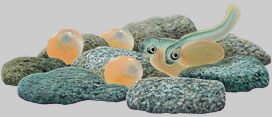 Hatching in Dec. Length: 18mm (0.7in.) |
||
 Fry of Amago in Jan. Length: 26mm (1.0in.) |
||
|
References: Araga, C. (1989). Amago Yamame Gaku Gairon. Weekly Sunday Fishing Extra issue Amago Yamame no subete [All of Amago Yamame]. Osaka: Weekly Sunday Fishing. Imanishi, K. (1989). Iwana and Yamame. Tokyo: Heibonsha. Kato, K. (1990). Yamame Amago sono Seitai to Tsuri [Yamame Amago Its Ecology and Fishing]. Tokyo: Tsuribitosha. Kawanabe, H., & Mizuno, N. (Ed.) (1993). Nihon no Tansuigyo. Tokyo: Yama-kei publishers. Matsubara, H. (1981). Sakeka Keiryugyo no Bunrui to Seitai [Classification and Ecology of Salmonid]. Besatsu Fishiing Iwana Yamame. Tokyo: Sanpou Publishing. |
||
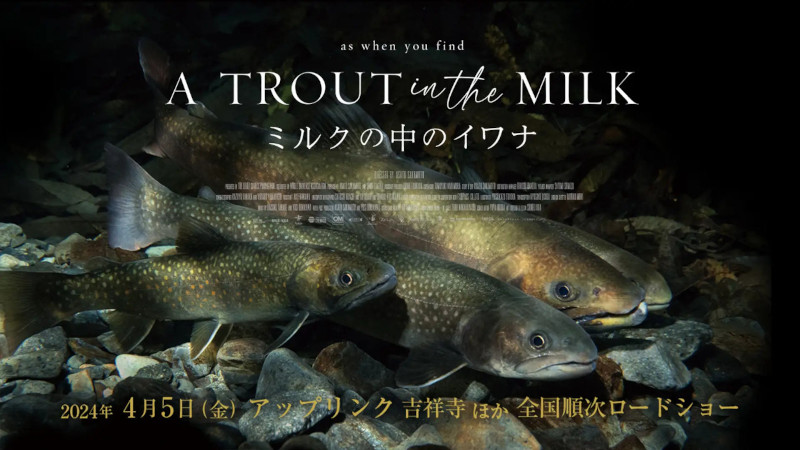 |
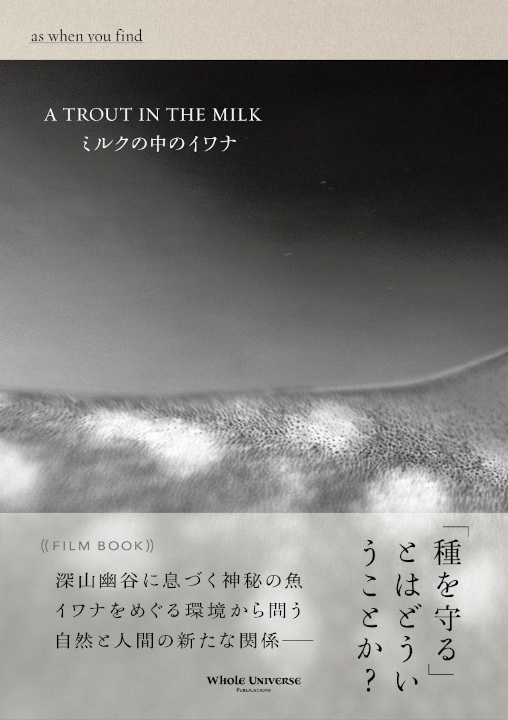 |
My drawings of trout were used in the scientific documentary film "A TROUT IN THE MILK" that reexamines the relationship between Japanese people and char and explores the vision for the future to better conserve the natural environment. Click on the images. |
| Spring | Early Summer |
Summer | Autumn | Winter | Profile | Links | Home | ||
| Trout1 | Trout2 | Trout3 | Trout4 | Scene | Amago |
Iwana | Other |
Paper Craft of Japanese Trout and the World Trout My Best Streams & Japanese Fly Fishing "Tenkara" Please look at here if you are interested in ordering pictures. © 1997 Yoshikazu Fujioka |